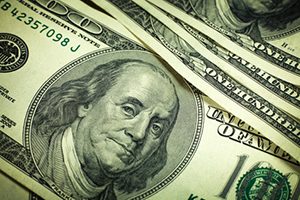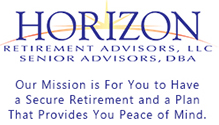Dave Mello
Horizon Retirement Advisors, LLC
The Best Time for Tax Planning
Following some of these tax-savvy strategies can help you save money

Tax planning involves far more than scrambling in April to defer income and boost deductions.
If you want to minimize what you pay in capital gains tax, reduce your year-end tax bill, and give less of your estate to Uncle Sam, you should be aware of the short- and long-term tax consequences of all your financial moves.
Tax-Deferred Savings Plans
One tax-savvy strategy is to contribute regularly to tax-deferred savings plans, which let you defer your tax payments until you make withdrawals. The benefits are two-fold: The more you contribute to a 401(k) or deductible IRA, for instance, the more you reduce your taxable income for that year. Plus, the money you invest grows at a much faster rate since taxes do not drag it down.
Reducing Your Taxable Estate
You have several tax-smart options when you’re investing outside of retirement plans. There are tax-managed mutual funds that seek to minimize the turnover in holdings and limit the number of taxable gains distributions to shareholders. If you’re looking to reduce your taxable estate, a quick way to do that is to make tax-free gifts up to $14,000 a year per person.
Tax-Free CDs, Bonds, and Money Market Funds
A tax-free CD or money market fund may not always save you more than their taxable cousins. Here’s how to tell which is best for you: Compare your after-tax return on the taxable investment with the return on the tax-free investment. To determine your after-tax return, you need to know your combined income tax bracket (plus federal and state) since that decides how much of your investment income you can keep.
If you pay 28 percent in federal taxes and 6 percent in state taxes, your combined bracket is 34 percent, which means you keep 66 percent of the income the investment generates. So if a taxable investment guarantees a 7 percent return, you’ll only pocket 66 percent of that or will net a return of 4.6 percent. If a tax-exempt instrument offers less than that, you’ll pocket more with the taxable option. Generally speaking, if you’re in a top tax bracket, you will benefit more from tax-free investments since the yield on a taxable investment would have to be very high to match your return in a tax-exempt instrument.
Capital Losses
Another tax-friendly savings strategy: If you have a taxable account of stocks and funds, take advantage of your capital losses to reduce your tax bill. Capital losses are allowed to the extent that you have capital gains plus an additional $3,000. In other words, if you have $10,000 in capital losses and no capital gains this year, then you can claim only $3,000 in losses. But if you have $5,000 in gains, you can claim $8,000 ($5,000 plus $3,000) in losses. Any unused losses may be carried over to future tax years.

Dave Mello
Horizon Retirement Advisors, LLC
707 Mount Rose St.
Reno, Nevada 98509
horizon@retirevillage.com
(775) 851-4754

Looking For Answers?
Download our Safe Money Guide and learn more about safe retirement options that can help you achieve your retirement goals safely - FREE!


